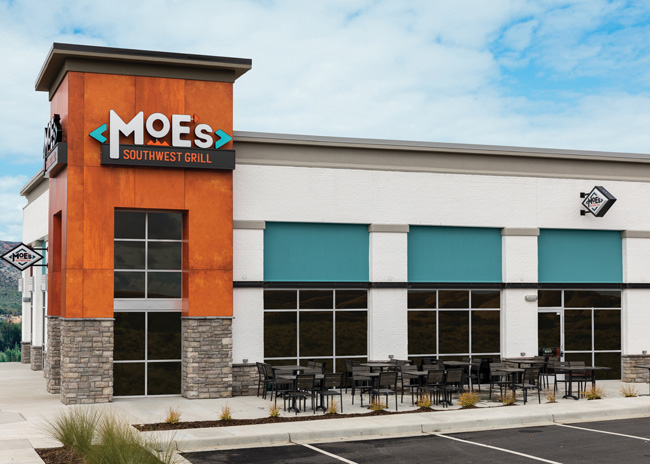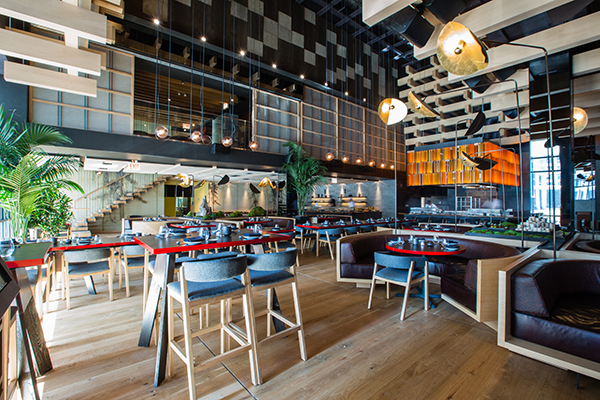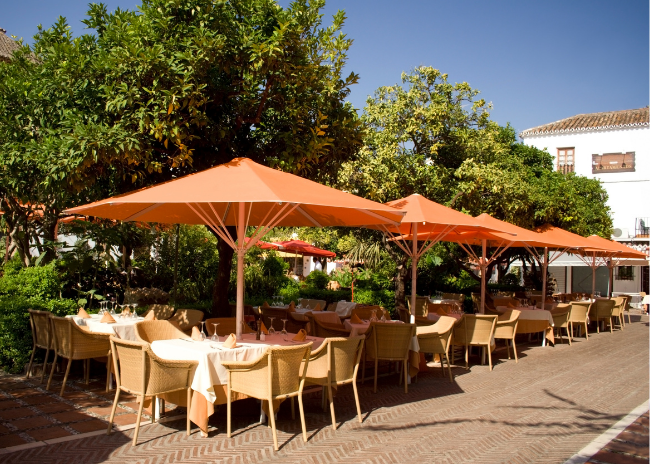Timeless Tips
Over the years, we’ve been privileged to share insights and expertise from professionals in all aspects of development and design. While some have since moved on to other companies, retired or switched career lanes, their words of wisdom ring as true today as ever.
Site Selection
“There are lots of things you can adjust, but you can’t control your location or your lease/mortgage, which tends to make up about 10% of your revenue. So the most important thing is to find the right location you can afford that can generate the right amount of revenue.” —Alex Diaz, The Restaurant Group, Miami (How To Use Feasibility Reports, 2019)
 When multiconcept operator Sage Restaurant Group looks for locations, it seeks areas with a lot of other restaurants. Along these lines, its Urban Farmer Restaurant is in the Meier & Frank Building next to Portland, Ore.’s bustling Pioneer Square, an iconic part of the city’s downtown culture. From The Art & Science of Site Selection, 2013. Image courtesy of Sage Restaurant Group“Once you qualify the right trade area, then you start looking for a site. The first criterion is to be at the epicenter of the trade area. Good visibility a mile off center is not a good place to be. Even high-end restaurant concepts need visibility and easy access. The need for visibility and an up-front position never goes away.” — Bill McClave, Birchwood Restaurants LLC (The Art & Science of Site Selection, 2013)
When multiconcept operator Sage Restaurant Group looks for locations, it seeks areas with a lot of other restaurants. Along these lines, its Urban Farmer Restaurant is in the Meier & Frank Building next to Portland, Ore.’s bustling Pioneer Square, an iconic part of the city’s downtown culture. From The Art & Science of Site Selection, 2013. Image courtesy of Sage Restaurant Group“Once you qualify the right trade area, then you start looking for a site. The first criterion is to be at the epicenter of the trade area. Good visibility a mile off center is not a good place to be. Even high-end restaurant concepts need visibility and easy access. The need for visibility and an up-front position never goes away.” — Bill McClave, Birchwood Restaurants LLC (The Art & Science of Site Selection, 2013)
“There is no such thing as a standard lease or purchase agreement anymore. Since the recession, everyone has come up with different ways of packaging different ‘delivery conditions’ and the lease work letters no longer contain standard definitions. The changing of two words can impact something that can cost hundreds of thousands of dollars and move it from the landlord’s to the tenant’s responsibility. Additionally, know the value of each of these work letter items and what they truly mean for you.” —Steve Starr, starrdesign (One Problem, Three Solutions: Site Selection, 2018)
“You can’t substitute the emotional intelligence, using your instincts and your gut along with the data, to help a franchisee make a decision…[And] don’t forget your underperformers, because that information is just as valuable because it tells you what you don’t want.” —Larry Sidoti, Garbanzo Mediterranean Fresh (How To Use Digital Analytics for Restaurant Growth, 2019)
 For as much as site selection has changed over the past decade, two things operators historically look for have stayed the same. “The important things for us are location and visibility, although we’re willing to sacrifice some of that for good bones,” says Ed Kane, principal with Boston-based Big Night Entertainment Group (BNEG). BNEG owns and operates high-end restaurants such as The Scorpion Bar, Shrine, Gem and Red Lantern. (From the Art & Science of Site Selection, 2013) Image courtesy of BNEG
For as much as site selection has changed over the past decade, two things operators historically look for have stayed the same. “The important things for us are location and visibility, although we’re willing to sacrifice some of that for good bones,” says Ed Kane, principal with Boston-based Big Night Entertainment Group (BNEG). BNEG owns and operates high-end restaurants such as The Scorpion Bar, Shrine, Gem and Red Lantern. (From the Art & Science of Site Selection, 2013) Image courtesy of BNEG
Construction Cost Savings
“Allowances rarely cover the actual cost of final selections, and these omissions from the drawings force change orders that add to the original budget. On hard bid projects, an architect producing a thorough set of drawings will reduce scope confusion and the need for change orders, thus keeping the budget in check. Fees for architecture and engineering are investments for achieving a predictable project.” —Patrick Kelly, Berkeley Building Company (How To Reduce Change Orders, 2012)
 While many chains now choose analytics, Garbanzo’s Fresh Mediterranean instead strives to emulate what works best at its most successful locations. Important factors include visibility, access, parking and traffic counts. From How to Use Digital Analytics for Restaurant Growth, 2019. Image courtesy of Garbanzo Mediterranean Fresh“Create a value-engineering menu, which translates into a formalized list of potential substitutions compared to the original materials or methods specified, and detail the savings that could be realized. This enables the client to make clear and cost-effective decisions regarding the construction of the project. Architects can also use this list to tailor the project and regularly offer compromises to the client.” —Rob Mescolotto, Hospitality Construction Services (Process-Based Value Engineering Pays Off, 2015)
While many chains now choose analytics, Garbanzo’s Fresh Mediterranean instead strives to emulate what works best at its most successful locations. Important factors include visibility, access, parking and traffic counts. From How to Use Digital Analytics for Restaurant Growth, 2019. Image courtesy of Garbanzo Mediterranean Fresh“Create a value-engineering menu, which translates into a formalized list of potential substitutions compared to the original materials or methods specified, and detail the savings that could be realized. This enables the client to make clear and cost-effective decisions regarding the construction of the project. Architects can also use this list to tailor the project and regularly offer compromises to the client.” —Rob Mescolotto, Hospitality Construction Services (Process-Based Value Engineering Pays Off, 2015)
“The budget is even more important than the timeline. If you go over your budget, it’s going to eat away for years at what you thought you were going to make. The key is to have the correct budget to start. It’s also important to set aside funds, around 10% of the job cost, to deal with unanticipated budget overages.” —Tim Spiegelglass, Spiegelglass Construction Company (Construction Control: 5 Challenges of Building a Restaurant, 2019)
“With all the different levels of service you can purchase from your designers, it’s tempting to go cheap. Be careful of going too cheap, though. I’ve seen owners shell out tens of thousands of dollars to correct mistakes that could have been avoided by paying for an extra site visit or additional sketches.” —Joe Crowley, Trinity Building + Construction Management (Tips for Successful Restaurant Construction, 2018)



